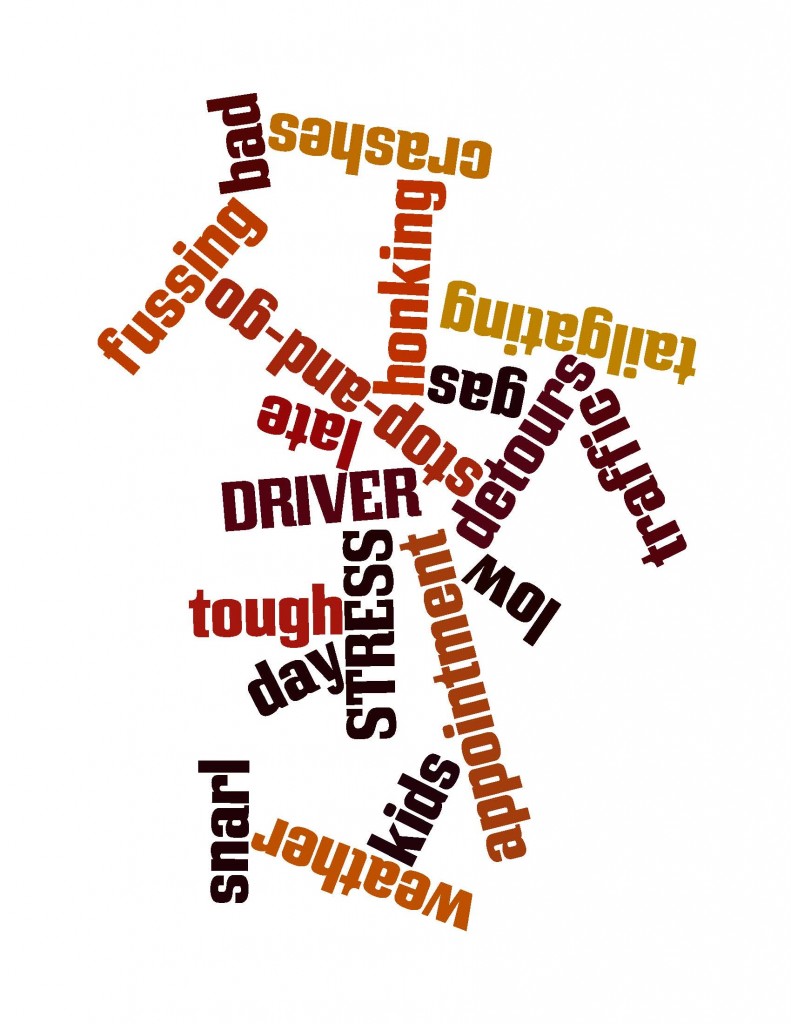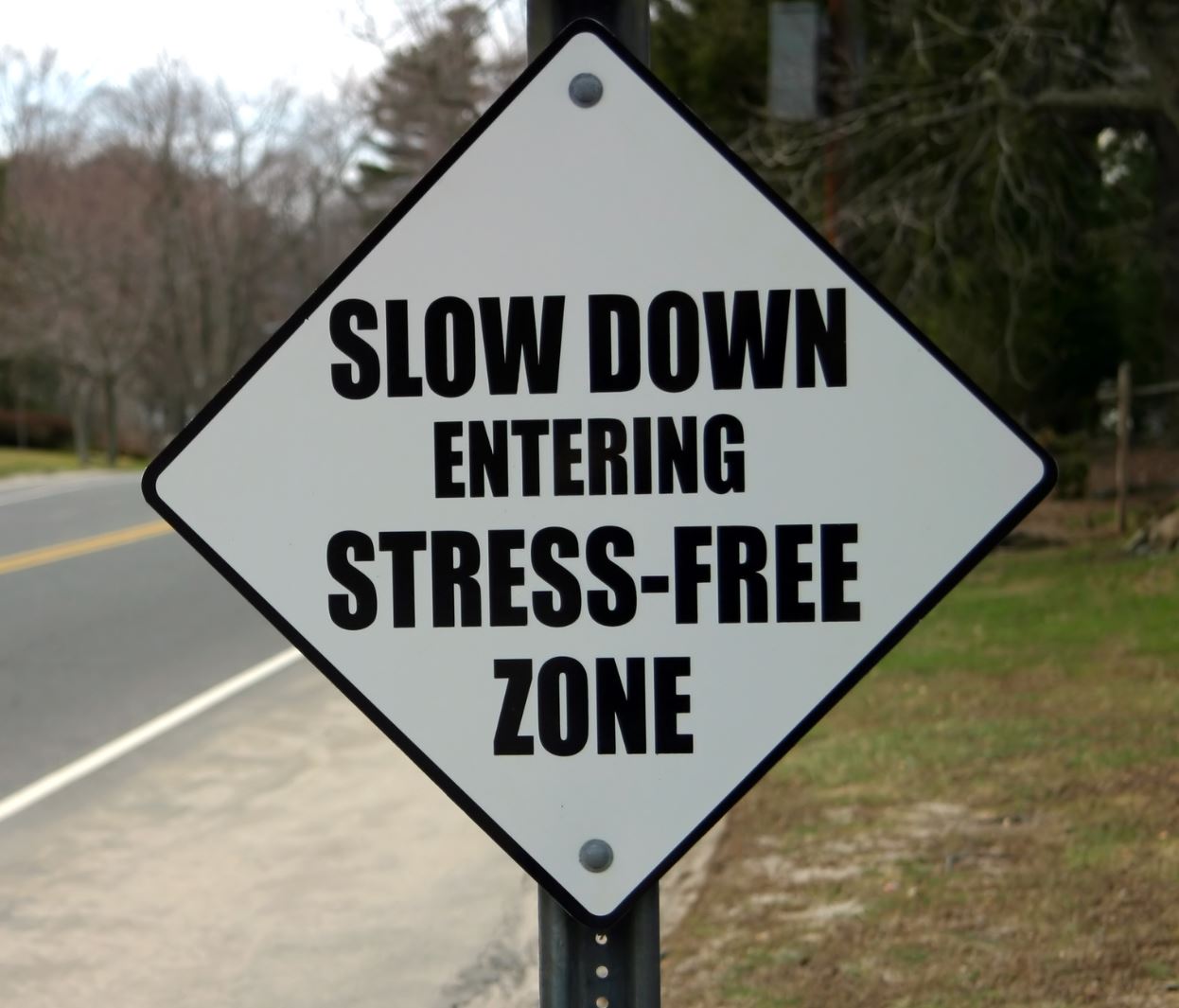 Behind every steering wheel lurks driver stress. It creeps up when motorists are stuck in start-stop traffic, or being tailgated, or having to brake hard to avoid a crash, or seeing motorists who don’t follow the rules, or dealing with detours or inconsiderate parking or…
Behind every steering wheel lurks driver stress. It creeps up when motorists are stuck in start-stop traffic, or being tailgated, or having to brake hard to avoid a crash, or seeing motorists who don’t follow the rules, or dealing with detours or inconsiderate parking or…
The list of how driving can torque up your tension level goes on and on. So, we thought we’d share seven techniques you can use to tame driver stress. The benefits go beyond feeling more relaxed — a calm driver is a safer driver. A person who drives while stressed runs a much greater risk of being involved in a crash that kills or injures them or another person on the road. So buckle up and try all these tension tamers.
1. Start Out Calm – Clear your mind of problems before starting your vehicle, so you can focus on the road and hazards ahead. Don’t drive if you’re exhausted or angry. Stress and powerful emotions, whether they come from driving or something unrelated, can affect your abilities.
If you’re travelling somewhere for the first time, figure out your route before you leave, and allow enough time to reach your destination at a safe speed. If you have babies or children on board, ensure they have what they need before the trip. Put your seating, heating and stereo where you want them before you put your vehicle into gear.
2. Be Aware and Drive With Care – The unexpected can happen at any time. Watch for vulnerable road users like cyclists, pedestrians, motorcyclists. Animals can show up by surprise too.
The perils of distracted driving – like using a cell phone, texting, grooming or eating when behind the wheel – are detailed in a Vancouver Sun article. Distracted driving contributed to 104 deaths in B.C., in 2010, RCMP statistics show. It’s illegal to a use a hand-held communication device like a cellphone and certain other electronic items while driving. Beware of all driver distractions and focus on the road.
Be the best driver you can be — drive for the conditions while staying within the speed limit, watch the road ahead, obey traffic signs, use your turn signals and yield whenever possible. If you’ve never liked driving or you’ve been in a crash that has shaken you up, find a driving instructor who offers “driver rehabilitation” to boost your skills and confidence.
3. Choose a Cool Mindset – Traffic tie ups happen but being frustrated won’t get you there any faster. Accept that there are other people out there who will not always drive considerately or responsibly and decide that you won’t let them bother you. Try giving the other driver the benefit of the doubt – maybe they’re having a tough day or they made an honest mistake. Maybe you too made a bonehead move on the road…once.
4. Don’t Entertain Negativity and Anger – Don’t ridicule, curse or yell at other drivers — even if you think you’re keeping it to yourself. Getting wound up over others’ actions may have a long term negative effect on your health. You might feel protected in your vehicle but frustration can impair your judgment and lead to rash decisions, and verbal and physical conflict. Dr. Leon James, co-author of Road Rage and Aggressive Driving says, “With road rage, you’re basically driving under the influence of impaired emotions.”
5. Label and Let Go – If you can’t always ignore inconsiderate or obnoxious drivers, try this novel tactic to label them “an idiot”. Knowing that there will always be a few people who don’t drive as you think they should, being able to accept that and re-focus your mind on the road ahead, is important. Labelling is a way to let emotion go – and who couldn’t use less cares, worries and anger? 6. Try Tools to Tackle Tension – Relaxation techniques reduce the stress your body holds, so you’ll feel better physically and emotionally. Practice Progressive Muscle Relaxation (PMR) at home. When you’re behind the wheel, take deep breaths if you feel tense, or listen to calming or feel-good music. During long trips, have regular breaks to revive your body and concentration, and do a few driving-focused exercises to keep you alert and reduce any aches or pains.
6. Try Tools to Tackle Tension – Relaxation techniques reduce the stress your body holds, so you’ll feel better physically and emotionally. Practice Progressive Muscle Relaxation (PMR) at home. When you’re behind the wheel, take deep breaths if you feel tense, or listen to calming or feel-good music. During long trips, have regular breaks to revive your body and concentration, and do a few driving-focused exercises to keep you alert and reduce any aches or pains.
7. Get Away From Aggressive Drivers – Get out of the way of aggressive or annoying drivers and let them pass. Do not make eye contact – you don’t want to know any more about them. Never retaliate with nasty looks or rude gestures. If a fellow motorist becomes seriously threatening, drive to a police station or crowded public place.
REMEMBER: You Can Also NOT Drive – If you’re not in the right headspace and need a moment for self care, it’s probably best to take it. Take some time to relax and address your stress before heading out on the road. It’s safer for you and those you share the road with.
Reduce tension while you’re en route and you’ll feel better and drive better. If you get the urge to return to angry thoughts or rev up your driving intensity, think about the long-term stress and pain a crash could cause you or others.
With driving, as in many parts of our lives, we have little of control over others or our environment. Our greatest power lies in how we view the world and manage ourselves. The seven secrets to taming driver stress might just share some similarities with the secrets to a happy life.

It’s important to be extra careful if you get hungry and your blood sugar level drops too much. It often leads to irrational behaviour and sometimes impairment. People should always travel with a protein bar handy or some way of maintaining blood sugars. Don’t drive with the hangrys.
A great comment Martin! Driving – or just plain being – while hangry is no fun!
My son gets really stressed when he drives, so thanks for sharing this. I like your point about getting away from aggressive drivers and letting them pass. I think other people tend to stress him out on the road, so I’ll have to ask him about how he avoids these kinds of drivers.
Thanks for letting us know it was useful. That’s why we do it!
I drive transit buses in a smaller city…. the stress is constant and comes from drivers.. sometimes passengers but I think mostly it comes from the way things are run…. obviously transit isn’t making money only costing huge amounts for cities to run…. for this reason drivers are expected to keep unreasonable route times…. work without breaks… sit in cheapest seats available often old and collapsed on one site de from overweight drivers …. I could go on…. how about some tips on how to deal with that!
Hi Jan,
This sounds like a question you might want to pose to your employer as it deals with workplace issues. Hope that this helps – thanks for connecting with us here!
I have always thought, the way of good driving is very closely related to the way of a happy, and more generally a good life!
Great write up, may I ask who wrote this personally thank you!
This is extremely useful. I just started driving. Thanks
Glad to hear that! Thanks for connecting with us here.
Thank you,
You have introduced a practical, useful tips that help drivers be more focussed and less tensed on their journeys.
Glad to hear that you liked this Ahmad!